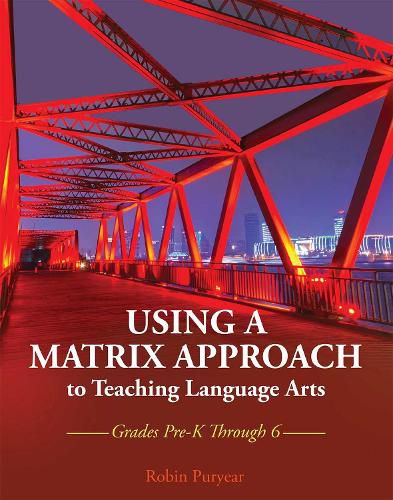Readings Newsletter
Become a Readings Member to make your shopping experience even easier.
Sign in or sign up for free!
You’re not far away from qualifying for FREE standard shipping within Australia
You’ve qualified for FREE standard shipping within Australia
The cart is loading…






Using a Matrix Approach to Teaching Language Arts: Grades Pre-K Through 6 helps pre-service teachers bridge the gap between theory and practice by providing them with a unique matrix approach to language arts instruction. The approach integrates research- and evidence-based strategies and practices, demonstrating not only what to teach at each grade level to support students’ continued development, but also how to manage the practical instruction of language arts within the classroom.
The text begins by introducing readers to the theories upon which research- and evidence-based language arts instruction is founded. Then, the matrices-whole group instruction, tiered instruction, guided reading, guided writing, and product development-are introduced and detailed. Readers also learn how to incorporate language arts into content-area instruction.
Using a Matrix Approach to Teaching Language Arts is ideal for courses with a focus on educational methodology. The book is also an excellent resource for new teachers, veteran teachers, reading specialists, and school administrators.
$9.00 standard shipping within Australia
FREE standard shipping within Australia for orders over $100.00
Express & International shipping calculated at checkout
Using a Matrix Approach to Teaching Language Arts: Grades Pre-K Through 6 helps pre-service teachers bridge the gap between theory and practice by providing them with a unique matrix approach to language arts instruction. The approach integrates research- and evidence-based strategies and practices, demonstrating not only what to teach at each grade level to support students’ continued development, but also how to manage the practical instruction of language arts within the classroom.
The text begins by introducing readers to the theories upon which research- and evidence-based language arts instruction is founded. Then, the matrices-whole group instruction, tiered instruction, guided reading, guided writing, and product development-are introduced and detailed. Readers also learn how to incorporate language arts into content-area instruction.
Using a Matrix Approach to Teaching Language Arts is ideal for courses with a focus on educational methodology. The book is also an excellent resource for new teachers, veteran teachers, reading specialists, and school administrators.